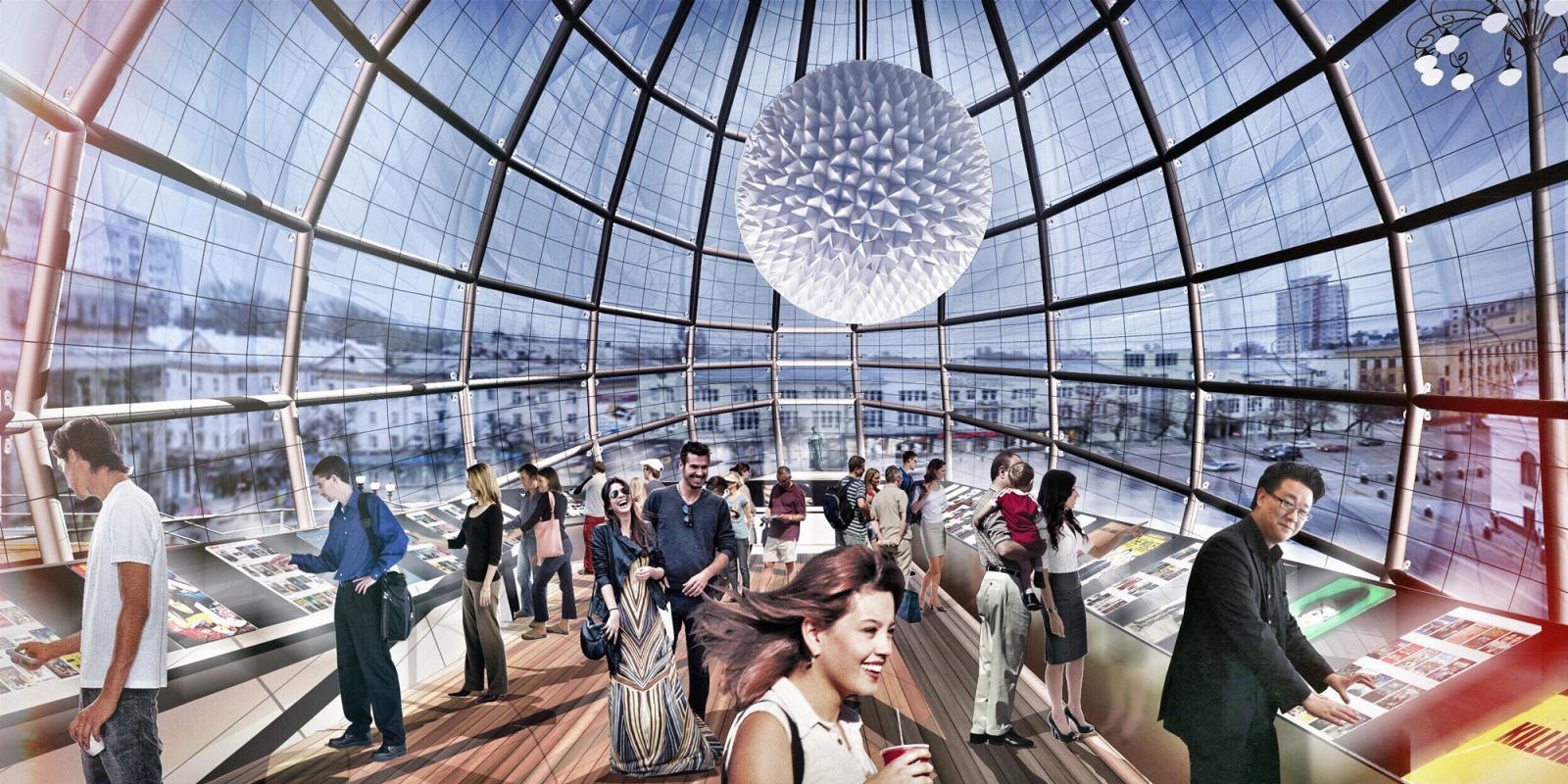Pushkinsky International Cinema Hall At Moscow - Revitalization
The project consists of the restoration of Pushkinsky International Cinema, the addition of two exterior glass towers, an interactive hub glass structure and a public recreational zone adjacent to Passion Plaza. The existing building is an architectural gem in the city of Moscow that suffered years of neglect. The new addition and its architectural elements attempt to recognize Pushkinsky cinema’s great history while also paving its path towards its future in the city of Moscow. The new building program is housed within two glass towers. The glass towers offer retail at its ground level, and concession stands and a book store on its second level. They become new façade elements that showcase the cinema’s restored splendor without covering the existing building from the public view. The glass towers work as special mediators between public and private areas. They invite the public in to enjoy the theater and experience the city. The new public areas outside the cinema consist of public art, a skating rink, a small amphitheater, and an interactive hub structure / information center. In addition, the project proposes improvements to its adjacent streets. Existing lanes are reconfigured in a new way. Therefore, Tverskoy Boulevard has newly dedicated bicycle lanes running along a green median strip. The bicycle lanes and the green median strip are sandwiched between car lanes and public transportation lanes. This green core beautifies the street and ensures the bicyclists safety. The project is a comprehensive design that considers the improvement of the existing building and its adjacent transportation corridors. It also provides public recreational areas adjacent to its plaza, and a buffer zone in the form of glass towers mediate between the building’s private areas and its surrounding public urban spaces
![[MetropolitanmomentuM - Pushkinsky International Cinema Hall At Moscow - Revitalization - COVER IMG]](https://architectureprizecom.s3-us-west-2.amazonaws.com/uploads/large/large_1470032760.jpg)



